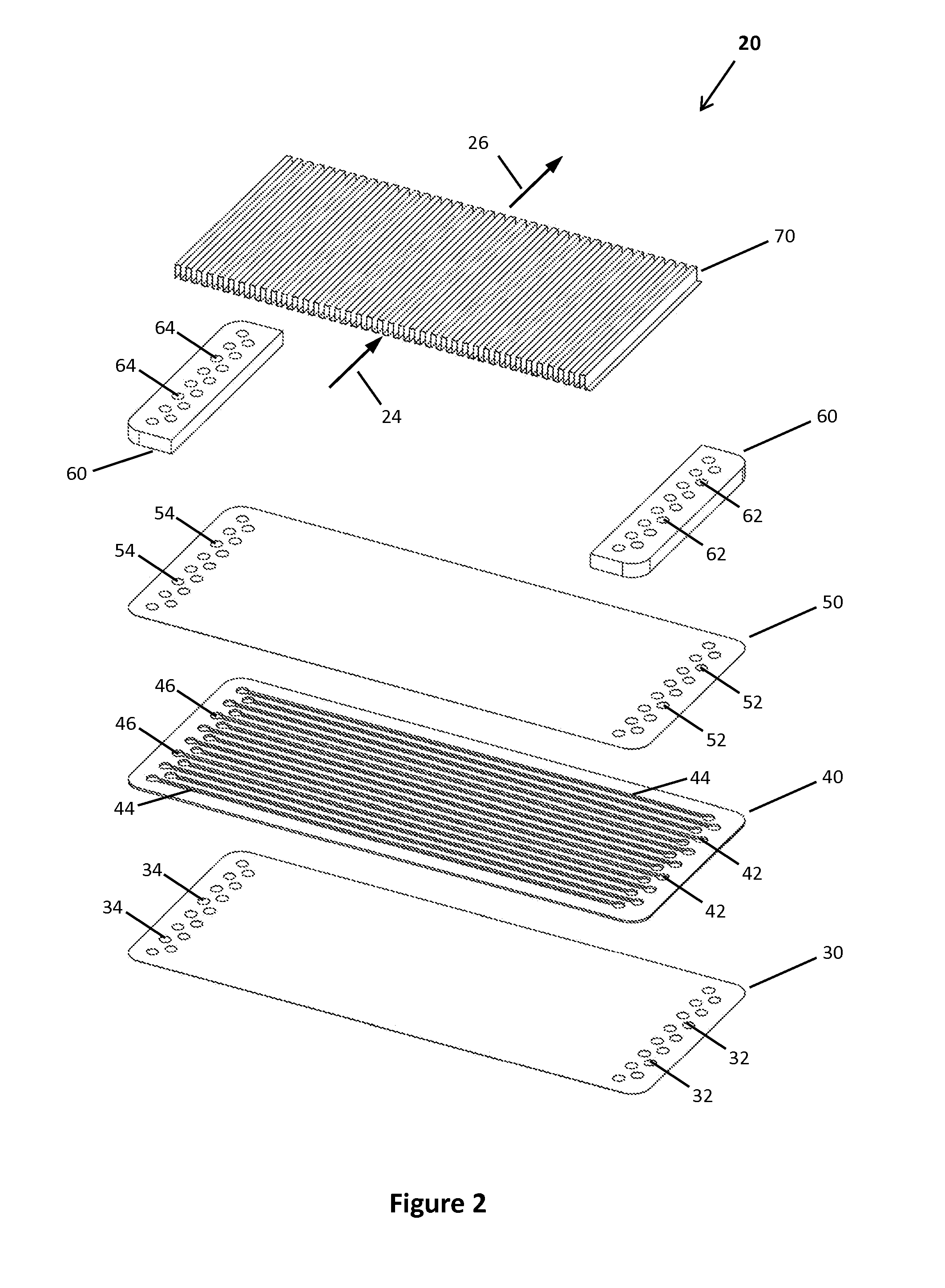Plate fin heat exchangers and methods for manufacturing same
a heat exchanger and plate fin technology, applied in the field of heat exchangers, can solve the problems of affecting the size of the heat exchanger, prone to fouling, degrading the cooling efficiency, etc., and achieve the effects of high efficiency, low cost and high thermal conductivity
- Summary
- Abstract
- Description
- Claims
- Application Information
AI Technical Summary
Benefits of technology
Problems solved by technology
Method used
Image
Examples
Embodiment Construction
Definitions
[0118]Unless otherwise specified, the following definitions apply:
[0119]The singular forms “a”, “an” and “the” include corresponding plural references unless the context clearly dictates otherwise.
[0120]As used herein, the term “comprising” is intended to mean that the list of elements following the word “comprising” are required or mandatory but that other elements are optional and may or may not be present.
[0121]As used herein, the term “consisting of” is intended to mean including and limited to whatever follows the phrase “consisting of”. Thus, the phrase “consisting of” indicates that the listed elements are required or mandatory and that no other elements may be present.
[0122]As used herein, the term “coolant flow field plate” or “fluid flow field plate” is intended to mean a plate that is made from a suitable thermally conductive material. The material is typically substantially fluid impermeable, that is, it is impermeable to the fluids typically found in heat exc...
PUM
 Login to View More
Login to View More Abstract
Description
Claims
Application Information
 Login to View More
Login to View More - R&D
- Intellectual Property
- Life Sciences
- Materials
- Tech Scout
- Unparalleled Data Quality
- Higher Quality Content
- 60% Fewer Hallucinations
Browse by: Latest US Patents, China's latest patents, Technical Efficacy Thesaurus, Application Domain, Technology Topic, Popular Technical Reports.
© 2025 PatSnap. All rights reserved.Legal|Privacy policy|Modern Slavery Act Transparency Statement|Sitemap|About US| Contact US: help@patsnap.com



